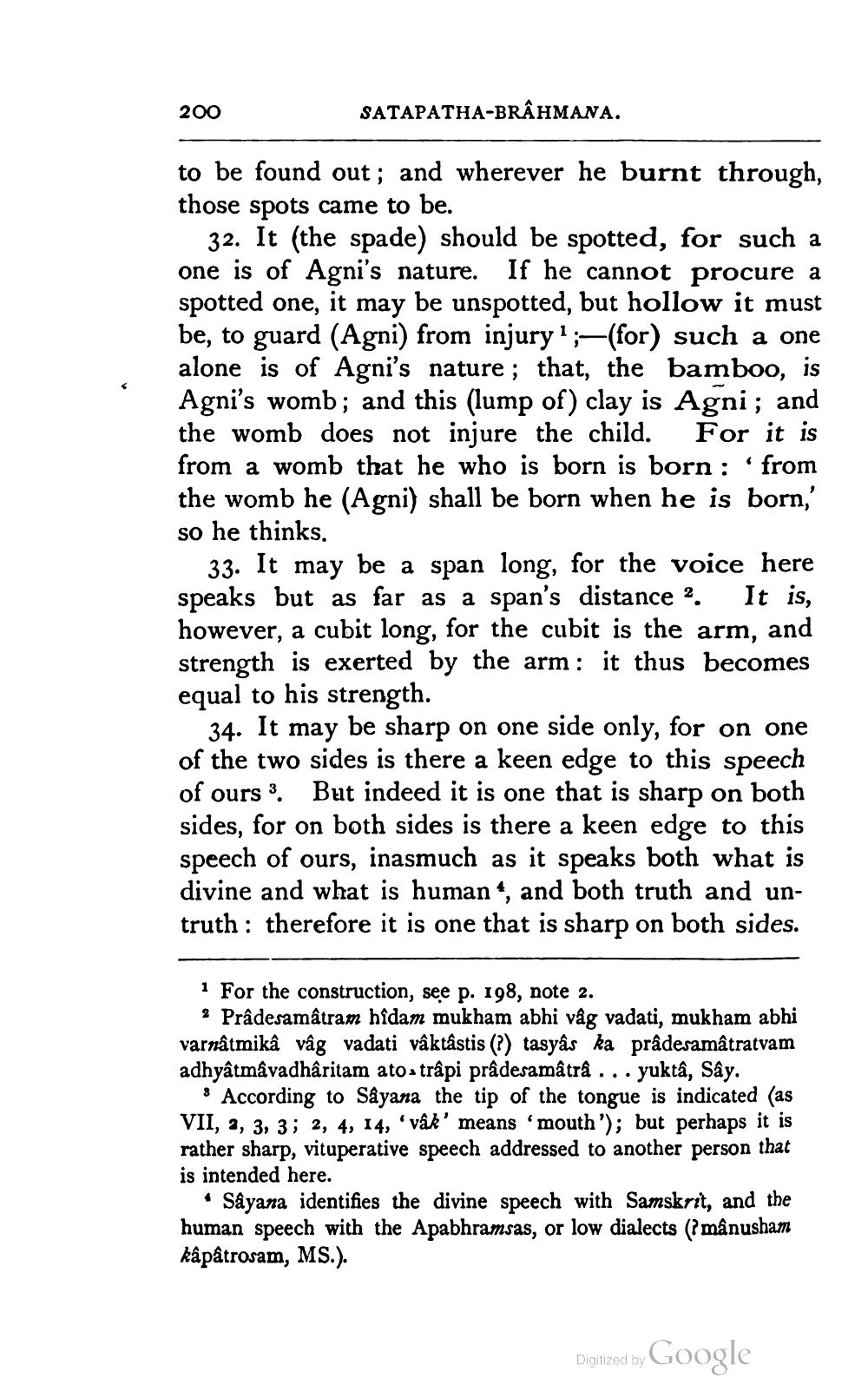________________
200
SATAPATHA-BRAHMANA.
to be found out; and wherever he burnt through, those spots came to be.
32. It (the spade) should be spotted, for such a one is of Agni's nature. If he cannot procure a spotted one, it may be unspotted, but hollow it must be, to guard (Agni) from injury ? ;-(for) such a one alone is of Agni's nature; that, the bamboo, is Agni's womb; and this (lump of) clay is Agni; and the womb does not injure the child. For it is from a womb that he who is born is born : 'from the womb he (Agni) shall be born when he is born,' so he thinks.
33. It may be a span long, for the voice here speaks but as far as a span's distance 2. It is, however, a cubit long, for the cubit is the arm, and strength is exerted by the arm: it thus becomes equal to his strength.
34. It may be sharp on one side only, for on one of the two sides is there a keen edge to this speech of ours 3. But indeed it is one that is sharp on both sides, for on both sides is there a keen edge to this speech of ours, inasmuch as it speaks both what is divine and what is human", and both truth and untruth : therefore it is one that is sharp on both sides.
1 For the construction, see p. 198, note 2.
? Prâdesamâtram hîdam mukham abhi våg vadati, mukham abhi varnâtmikâ vâg vadati vâktastis (?) tasyâs ka prâdesamâtratvam adhyâtmâvadhâritam atos trâpi prâdesamâtrâ . . . yukta, Sây.
• According to Sâyana the tip of the tongue is indicated (as VII, 2, 3, 3; 2, 4, 14, 'vâk' means 'mouth'); but perhaps it is rather sharp, vituperative speech addressed to another person that is intended here.
• Sâyana identifies the divine speech with Samskrit, and the human speech with the Apabhramsas, or low dialects (?mânusham kâpâtrosam, MS.).
Digitized by Google




